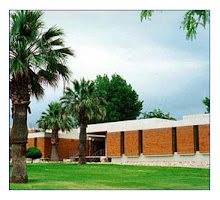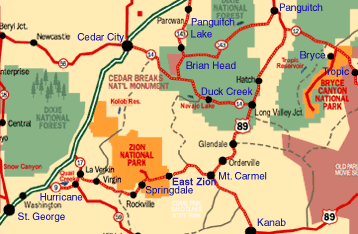

Yes, dinosaurs really did exist! And Utah can prove it.
Millions of years ago, all types of dinosaurs roamed across the landscape of what is now Utah. Literally thousands of actual remnants of this fantastic prehistoric era are carefully preserved and interpreted in sites, state parks, museums and quarries all across the state of Utah...just awaiting your discovery.
There are prehistoric sites and attractions throughout all of Utah....the northern part, northeastern part, central part, eastern part, southeastern part, and the southwestern part.
By visiting these dinosaur sites, you can see and learn how these fossilized remains have been protected and preserved. These prehistoric fossils and bones represent a priceless part of Utah's past, and these remnants are protected by federal regulations.
Millions of years ago, all types of dinosaurs roamed across the landscape of what is now Utah. Literally thousands of actual remnants of this fantastic prehistoric era are carefully preserved and interpreted in sites, state parks, museums and quarries all across the state of Utah...just awaiting your discovery.
There are prehistoric sites and attractions throughout all of Utah....the northern part, northeastern part, central part, eastern part, southeastern part, and the southwestern part.
By visiting these dinosaur sites, you can see and learn how these fossilized remains have been protected and preserved. These prehistoric fossils and bones represent a priceless part of Utah's past, and these remnants are protected by federal regulations.
Interesting Facts....
**Digging up new types of dinosaurs allows paleontologists at Dinosaur National Monument in Jensen, Utah, to reconstruct the environment that the dinosaurs lived in. Each piece of information, from the types of rocks, to plant fossils, to remains of the frogs, lizards, and salamanders living at the same time as the dinosaurs, helps scientists describe what northeastern Utah looked like when the dinosaurs roamed.
**Fossils are remains or traces of ancient life. They provide the clues that paleontologists use to learn about prehistoric animals and plants. When a plant or animal dies, it usually decays or is eaten by other animals. However if it is buried before that happens, it may become a fossil. Hard materials, such as wood, bones, shells, and teeth have a better chance of being buried and fossilized because they decay more slowly than soft tissues like leaves or skin.
**The dinosaurs of Douglass Quarry, in Jensen, Utah, lived in the middle of the Age of Dinosaurs. They were one of nature's experiments that succeeded. The first dinosaurs survived, thrived, and ruled the earth for some 150 million years, while adapting to changing conditions. The early dinosaurs multiplied. Some grew larger, some began to walk on four legs, and others grew into different shapes. Each new feature.. a long neck or sharp teeth, or bony plates, if it helped the animal survive, was passed on to later generations. These features became the hallmark of each new kind of dinosaur.
**In order to be classified as a dinosaur, an animal must have...
1... hip, knee, and ankle bones that allow it to stand with its legs directly under its body.
2... a ridge on the upper arm bones.
3... jaw muscles that attach to the top of the skull.
4... three bones (that make up one side of the hips) that form an open socket for the thigh bone to fit in.
5... the second finger is the longest digit of the hand.
Dinosaurs in Southwestern Utah....
The St. George, Utah Dinosaur Discovery Site at Johnson Farm.. http://www.dinosite.org/ Dinosaur tracks were discovered on the farm in February, 2000, and it has become quite an attraction. The site is in the early stages of scientific study - so far more than 1,000 tracks have been found within a 10-acre area. Most were made by Dilophosaurus-like creatures and are three-toes, 13-18 inches long. There are also some smaller tracks and researchers have identified skin prints and impressions made by tail drags and swimming movements.
The tracks were found in large slabs of sandstone from the Moenave Formation, dating back some 205 million years to the beginning of the dinosaur era. Residents tromped over that very sandstone for years, never realizing it sheltered such treasures. Nobody new, until Dr. Sheldon Johnson flipped over a slab while trying to level his land. There, on the underside, the tracks were clearly visible.
Most of the tracks are actually "negative impression" casts that appear as bumps on the stone. The area was the bottom of an ancient freshwater lake in the center of the super-continent Pangea. Footprints left in the mud filled with silt and sand, and more sand was deposited over the top. The mixture eventually solidified into sandstone and mudstone, forming the casts. Now, when the slabs are flipped over, the casts appear, much like Jell-o popping out of a mold.
Dr. Johnson donated his land to the city of St. George and the U.S. Congress appropriated funds to help construct a science and visitor center. Volunteers do most of the work at the site.
~ ~ ~ Readers please note: This article is part of a much larger article I wrote in the Story Pages section of Footnote.com.http://www.footnote.com/page/1586/utahs_dinosaur_land/ I used about 50 photos and I also write under a different name. I have about 25 stories that I have written on the Footnote website, so far.


















